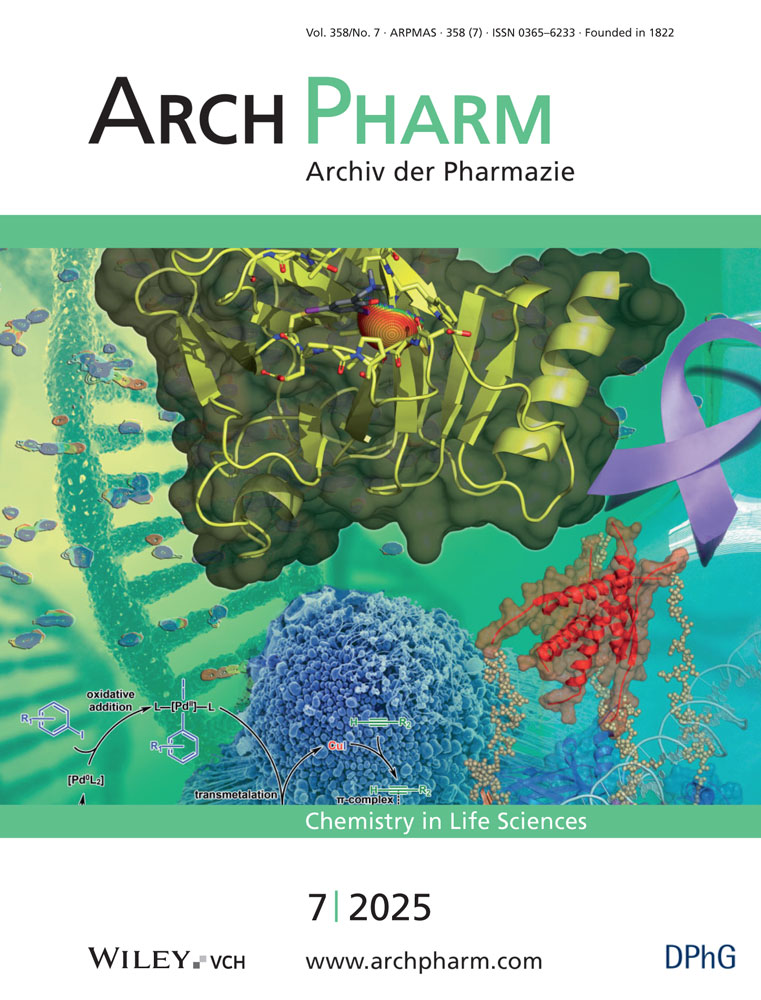Aza-Analogs of 8-Styrylxanthines as A2A-Adenosine Receptor Antagonists†
Preliminary results were presented at the Spring Meeting (“Doktorandentagung”) of the German Pharmaceutical Society in Kiel/Salzau 1996; abstract published in Pharm. unserer Z. 1996, 25, 208.
Abstract
In the present study we synthesized aza-analogs of 8-styrylxanthines, in which the ethenyl bridge is replaced by an imine, amide, or azo function, in order to investigate structure-activity relationships of the 8-substituent of A2A-selective xanthine derivatives. Thus, various 8-substituents were combined with theophylline or caffeine, respectively, and affinities of the novel compounds for adenosine A1- and A2A-receptors were determined and compared with those of analogous 8-styrylxanthine derivatives. 8-(Benzylideneamino)caffeine derivatives exhibited high affinity and selectivity for A2A-adenosine receptors, but were unstable in aqueous buffer solution at physiological pH values. 8-(Phenylazo)caffeine derivatives were less potent than corresponding 8-styrylcaffeine derivatives at adenosine receptors. The most potent azo compound of the present series was 8-(m-chlorophenylazo)caffeine (14b) exhibiting a Ki value of 400 nM at A2A-adenosine receptors and 20-fold selectivity versus A1-receptors. Due to the facile synthetic access to 8-(phenylazo)xanthine derivatives, which are obtained by coupling of 8-unsubstituted xanthines with phenyldiazonium salts, 14b may be an interesting new lead compound for the development of more potent and selective A2A-antagonists with azo structure.




